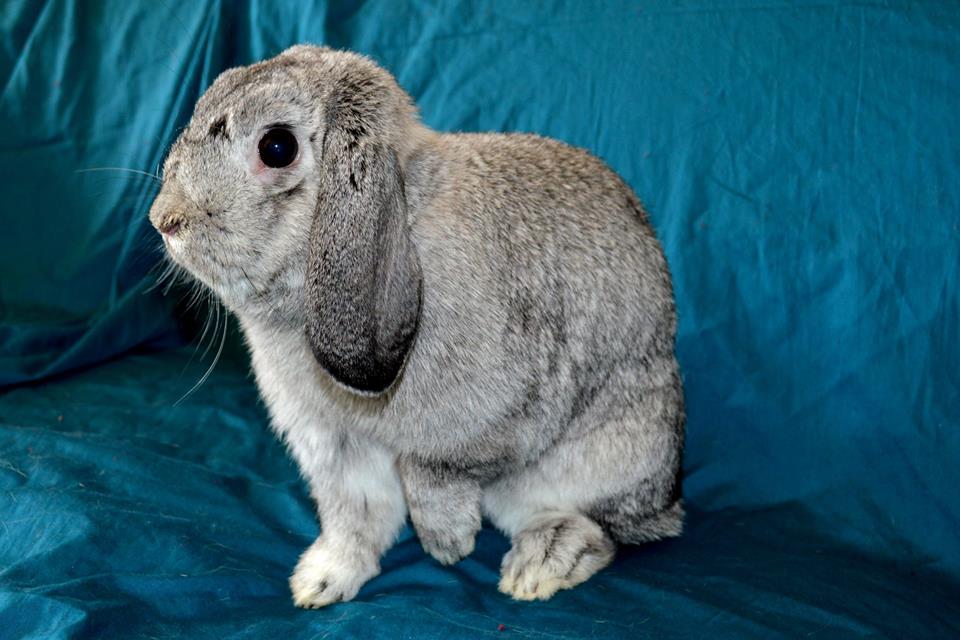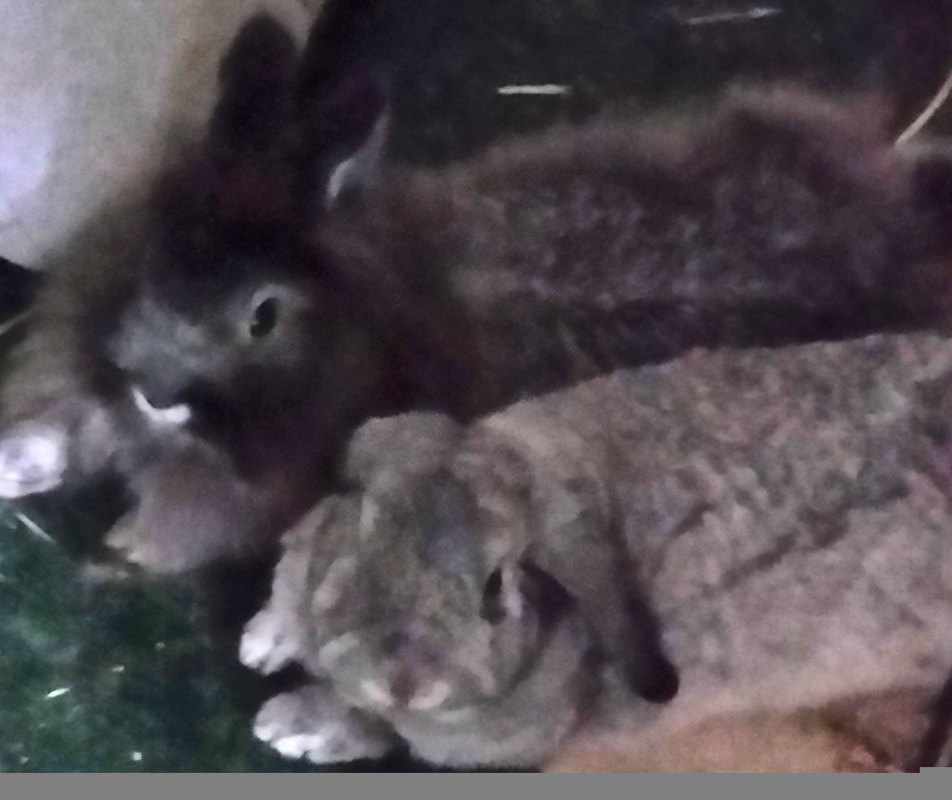Domesticated rabbits come in a huge variety of colors and sizes, from netherland dwarf (at 2-5 lbs) to the Flemish Giant (at 30 lbs or more). It’s a common misconception that rabbits stay small as some breeds of rabbits can reach lengths of up to four feet long. Rabbits should stay with their mother for the first eight weeks. By four months of age, it is recommended that they are taken to a knowledgeable veterinarian to be spayed or neutered in order to prevent reproduction related cancers. Rabbits tend to be most active at dawn and dusk. Their favorite activities include digging, jumping, and napping (as many as 18 naps per day!). Most rabbits enjoy exploring their environment and require mental and social enrichment to prevent boredom. Cardboard boxes with plastic eggs that are filled with food or treats encourage your rabbit’s natural foraging behavior. Happy rabbits will often jump into the air and twist the back half of their bodies (this is known as a “Binky”) while one that is comfortable in their surroundings will flop onto their sides and show their bellies. Some may even roll over. There are many ways to house your rabbit but it is recommended that their space is at least 4-6 times the size of their body when they are entirely stretched out. More space should be provided if they will be confined for most of the day. An example of one space guideline is “at least 8 square feet of enclosure space combined with at least at least 24 square feet of exercise space, for 1-2 rabbits, in which the rabbit or pair can run and play at least 5 hours per day.” You can build your rabbit a two-story “condo” with the floors connected by a ramp, commonly called an C&C cage. You can also buy a hutch or set up an xpen which allows you to fit the sides of your rabbit's house to almost any space you have available. One of the most important things about setting up an enclosure is to have a sold, non wired, floor. When a rabbit stands on a wired floor for too long it will cause deformities in their feet.
A rabbit’s diet should be made up of good quality pellets, fresh hay (timothy or other grass hays), water and, fresh vegetables. Anything beyond that is a “treat” and should be given in limited quantities. Good quality rabbit pellets should be relatively high in fiber (18% minimum fiber) and the main ingredient should be timothy hay. The majority of the house rabbit diet should be composed of grass hay (about 75-80%), fresh greens (15%), good pellets (10%), and treats/fresh fruit (less than 5%). A more in depth break down on rabbit diet can be found here (https://rabbit.org/what-to-feed-your-rabbit/) Bunnies are very social creatures. It is often recommended that you have two rabbits in what is called a bonded pair. Having a pair can prevent depression which may cause them to neglect grooming and develop other health issues. You can often adopt a pair that are already bonded and some rabbit rescues offer bonding classes that help to bond your rabbit with a new bond mate. Rabbits are susceptible to a variety of health problems if they do not receive proper care. A common health issue is overgrown teeth which may require grinding by a healthcare professional. As rodents, their teeth continuously grow and this growth is normally managed by their diet and chewing behavior. Rabbits can also develop sore hocks, causing areas of the feet to lose their hair and the skin to look red or inflamed. To prevent this, owners should ensure that they have plenty of soft surfaces such as carpets or fleece in order to lessen the amount of hard surfaces they stand on. Other common health issues are fleas/mites, gas (as they can not expel gas on their own it may become a serious and life threatening health issue), stasis (this very serious condition is life threatening if not treated within 12-24 hours), and upper respiratory infections. Overall, rabbit can be social and affectionate pets for owners who are willing to put in the time and energy to meet their care needs. Owners should be prepared to do their research as there are many misconceptions about rabbit ownership in regard to their diet, health, and other needs. Animal Care Costs (2018 Prices): Set Up
Animal Care Costs (2018 prices): Annual Maintenance
4 Comments
2/14/2018 11:23:27 pm
What a good walkthrough on how to start taking care of a domesticated rabbit. I haven't got the chance to have a rabbit pet because of my mom's allergies. Now that I have my own kids and they're asking for it, I want to give them a surprise. It's such a precious feeling, seeing your kids in tears because of the joy they felt when you presented them their new friend! Your article will be my guide in planning and preparing our life with the rabbits.
Reply
2/22/2022 07:28:03 am
Thanks a lot for sharing this amazing rabbit care sheet with detail information. That is really helpful for a rabbit and rabbit keeper.
Reply
3/28/2022 02:36:43 am
It got me when you shared that rabbits are sensitive to different types of health issues if they do not obtain proper care. That's probably why my sister is looking for a rabbit grooming service that can take care of her pet. I think she should go to a facility with certified professionals when it comes to grooming rabbits.
Reply
12/15/2023 10:42:57 pm
Wow! Your site is amazing. Please visit our website. Thanks
Reply
Leave a Reply. |
About the blogFerrets and Friends, LLC has four writers bringing you information on a variety of topics from pets to wildlife, education to conservation, and from new developments in our business to information about our industry. Learn something new each week! Archives
August 2020
Categories
All
|


 RSS Feed
RSS Feed